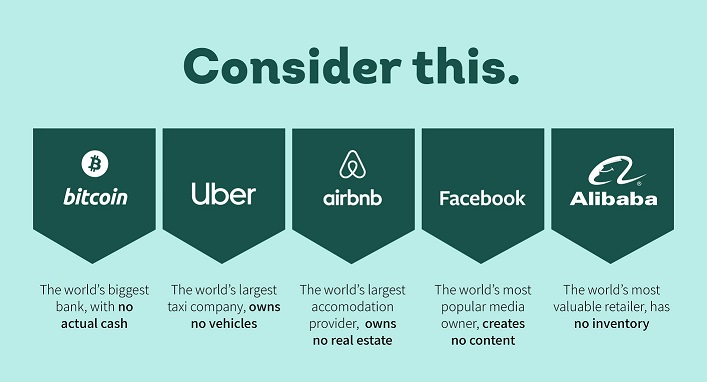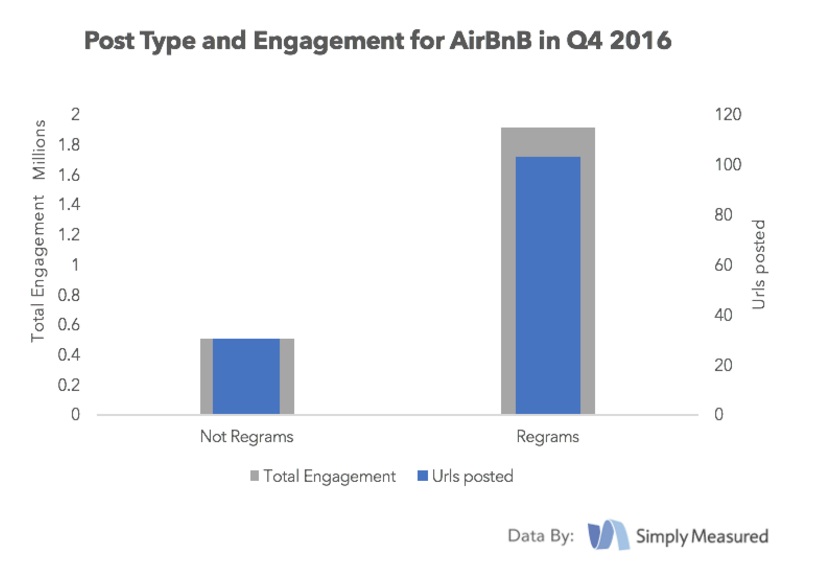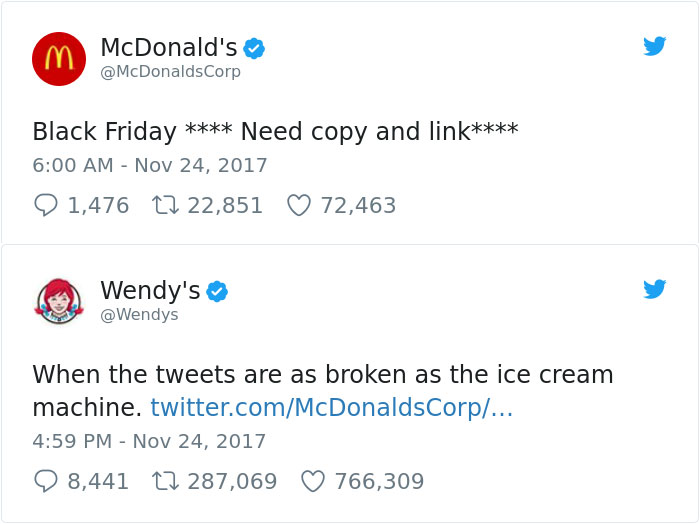
If you’re a marketer, you know it’s hard to stand out from the crowd today! Technology, the internet, and constant access to smartphones have made it difficult to get noticed by consumers who are inundated with brand advertising and content. Pair that with the fact that humans’ attention span has become shorter than that of a goldfish and you’re met with a substantial challenge.
Disruptive marketing — or the process of transforming and even replacing industry status quos — is often necessary for new or smaller brands to get ahead.
But what does disruptive marketing really mean? How can you learn to do it? Is the risk really worth the reward?
In the sections that follow, we’ll answer these questions and more. Let’s get started!
Quick Takeaways
- Disruptive marketing has its roots in the business concept of disruptive innovation.
- Like disruptive innovation, disruptive marketing makes products more accessible, is always customer-focused, and requires risk at the beginning.
- Disruption requires challenging assumptions and committing to continual improvement.
- Social media advertising and influencer marketing are examples of two significant disruptions in the marketing industry.
- Brands like Dollar Shave Club, La Croix, AirBnB, and Wendy’s have leveraged content to execute disruptive marketing strategies.
What is disruptive marketing (really)?
Disruptive marketing’s innovative roots
Disruptive marketing has its roots in the idea of disruptive innovation, a concept coined by Harvard business professor Clay Christensen. Clay defined disruptive innovation as:
“a process by which a product or service takes root initially in simple applications at the bottom of a market . . . eventually displacing established competitors.”
In other words: it starts small, gains momentum, upends industry norms, and eventually creates totally new ones.
The video below gives a quick and really helpful overview of disruptive innovation that I recommend watching before we keep going.
A few important takeaways from the video:
Disruptive innovation makes something more affordable or accessible.
The most obvious examples of this are technology innovations and smartphones, which have democratized data to the masses.
Disruptive innovation often seems like it’s doing everything wrong in the beginning.
When Uber was founded, people scoffed at the idea of getting into a stranger’s car. The idea of AirBnB made people nervous in the same way. Today? They’re both ubiquitous parts of everyday life and travel.
Disruptive innovations are often low quality at first.
They require many iterations and improvements over time. Think about our iPhones — every new model is better than the last, but Apple doesn’t wait until they perfect every feature to release them.
Disruptive innovations focus on the customer.
Business innovation and marketing crowds agree: you can only find success by fulfilling customer needs. Disruptive innovation looks at customer needs of the future, often filling them before customers even recognize they exist!
How does it all relate?
All of the above are true for disruptive marketing, too. When you think about these points from a marketing perspective, it’s something like this:
Disruptive marketing takes an innovative, novel approach to marketing products and services to new and existing audiences. It uses new channels, mediums, messages, and more to accomplish something not done before by other companies.
Because of this, disruptive marketing is also inherently risky. There are no past examples to work from. Marketers have to look at what they do know and make informed predictions about what’s likely to resonate with audiences.
If all of this sounds kind of difficult — well, that’s because it is. If disruptive marketing were easy, brands would do it all the time to get ahead of the competition.
The good news is that you can easily learn tools and techniques (we’ll cover them in this article) to help you recognize opportunities for disruptive marketing and innovation. You can practice them all the time — constantly trying out disruptive strategies and operating in a way that gets your content noticed.
And the payoff? It can be huge! Disruptive marketing helps new market entrants shoot ahead of established competitors, boosts company growth, and increases brand awareness manifold.
How do you use disruptive marketing?
Challenge assumptions
The first way to uncover disruptive marketing ideas is to challenge the assumptions that exist about current marketing practices and consumer preferences in your industry. Challenging assumptions is another idea founded in the world of business innovation, and it basically means to question what is assumed to be true.
When you do, you get one of two answers: a confirmation that an assumption is indeed true, or a realization that it isn’t. When you get that second answer — that the assumption is not true — you know you’ve got an opportunity for disruptive marketing.
Truly challenging assumptions requires questioning the very core of what we think must be true for a given industry or market. Consider these business innovation examples:

Image Source: weploy
Imagine what people’s responses would have been 20 years ago if they heard about banks with no cash, or accommodations providers with no property, or taxi companies that don’t own cars.
The point: what seems impossible may not be so. It may, in fact, be an assumption. True disruptive innovators — and disruptive marketers — challenge assumptions constantly to find new opportunities for growth.
Two true marketing disruptions that might help you visualize how this concept plays out in practice are:
Social media advertising
It’s hard to imagine now, but there was a time when the idea of businesses using social media was unheard of. As many a millennial will tell you, it was once a haven mostly exclusive to high school and college students. Fast forward to today, and social media ads have totally changed the way social platforms make money and how brands interact with consumers.
Influencer marketing
Regular people promoting products, earning a living from it, and getting higher engagement than celebrities with millions of followers? This idea may have been laughed at by marketers even just a few years ago. But today micro- and mid-level influencers are being pursued by brands big and small. They are all but replacing traditional celebrity endorsements as people find them less relatable and authentic than influencer content.
Continually improve
The second important concept to remember when you’re implementing a disruptive marketing strategy is that if you wait for it to be perfect, you’ll be waiting forever (and probably, a competitor will beat you out in the meantime). Part of being disruptive is launching quickly and then working to continually improve based on audience response.
To clarify: this does not mean being careless. Instead, it means thinking of ways to get your idea out there, continually assessing its performance, and improving as you go.
An easy example is your social media content. You post content, track its engagement and performance, and adjust your strategy as you go. You don’t wait until every post is perfect to get active on social platforms because then you’d never do it!
The same goes for a potentially disruptive marketing idea. Flesh it out enough to be launched, see how your initial audiences react to it, and make it better as you expand it. This strategy will make you more agile and help you test assumptions about your audience along the way.
4 Examples of Great Disruptive Marketing
Okay — by now you might be thinking: is disruptive marketing really for me? We’ve looked at examples like Uber, Facebook, and Apple. What happened to disruption helping small brands get ahead? How can you actually be disruptive in your own niche (and perhaps on a limited budget)?
Great questions. And here’s the answer: you can do it with content.
Content marketing is used today by 91% of businesses across industries. It has proven to earn 3x the leads and 6x the conversions as other marketing methods, and at only 62% of the cost.
Your content is a huge opportunity for disrupting the marketing status quo. Let’s find inspiration from 4 brands that have already done it successfully.
Dollar Shave Club
While every other razor brand was trying to one-up each other on the smoothest and most luxurious experience, Dollar Shave Club came onto the scene in 2011 with a game-changing assumption: people don’t actually care much about those things when it comes to shaving.
They also cut right to the chase about the currently inconvenient experience of buying a razor.
Dollar Shave Club’s first commercial — now viewed a whopping 24+ million times on YouTube — uses a healthy dose of snarky humor to pretty quickly convince potential customers that they’ve got a better option.
They totally flipped the standing narrative in the razor industry and convinced the masses that less is actually more. Today they have more than 4 million subscribers.
La Croix
La Croix has been around since 1981 in the extremely competitive beverage industry. Celebrity endorsements are common in this industry (we can all name a few Pepsi or Gatorade commercials featuring famous faces, right?) and once social media became a thing, influencers were just as common, too.
Rather than go after heavy-hitting influencers, however, La Croix decided to take a different approach. They started partnering with micro- and nano-influencers (some with only a few hundred followers) to generate content that felt more relatable to their audience. Then they began featuring it on their own social media pages.

Image Source: Instagram
It worked! La Croix’s sales doubled over five years between 2013-2018, showing the power of micro-influencers to attract and engage their audiences.
AirBnB
AirBnB capitalized on user-generated content — influencer or not — to create a brand name now known for its authenticity (and for inspiring wanderlust in its audience). Remember that AirBnB doesn’t own any of the property for rent on their platform. To find and share content, they decided to look toward their customers.
In 2016, well before user-generated campaigns became the norm, more than 75% of AirBnB’s content was generated by app users.

Image Source: Pixlee
They moved away from the industry norm of sharing property photos and focused on selling the actual experience of staying at a place. As we know now, it paid off in spades.
Wendy’s
What if I told you that snark marketing was founded in the… fast food industry? You read that right. Wendy’s, specifically, spearheaded the idea that snarky, clever interaction with customers and other brands would be a good way to stand out on crowded social media spaces.
Their snarky replies to customers (many who quite literally ask for it) evolved into an annual #NationalRoastDay when Wendy’s roasts Twitter users, competitors, and lots of other good-sport brands who get in on the fun. And they definitely don’t miss a chance to get one in on their top competitor when the opportunity presents itself:

Image Source: Twitter
Wendy’s social media snark has earned them followers, created a new part of their brand personality, and kept their brand name active in online conversation. Worth the risk!
Over to You
Could your brand be a disruptor in your industry? From blogs to video to social media posts and more, your content is a driver of new ideas and opportunities for your marketing strategy.
If you want to boost the quality and volume of your brand’s content, Marketing Insider Group can help. Our team of writers and SEO experts will deliver you optimized, ready-to-publish content every single week for one year (or more!).
Check out our SEO Blog Writing Service or schedule a quick consultation with me to get started.
The post The Content-Driven Guide to Disruptive Marketing [With Examples] appeared first on Marketing Insider Group.

